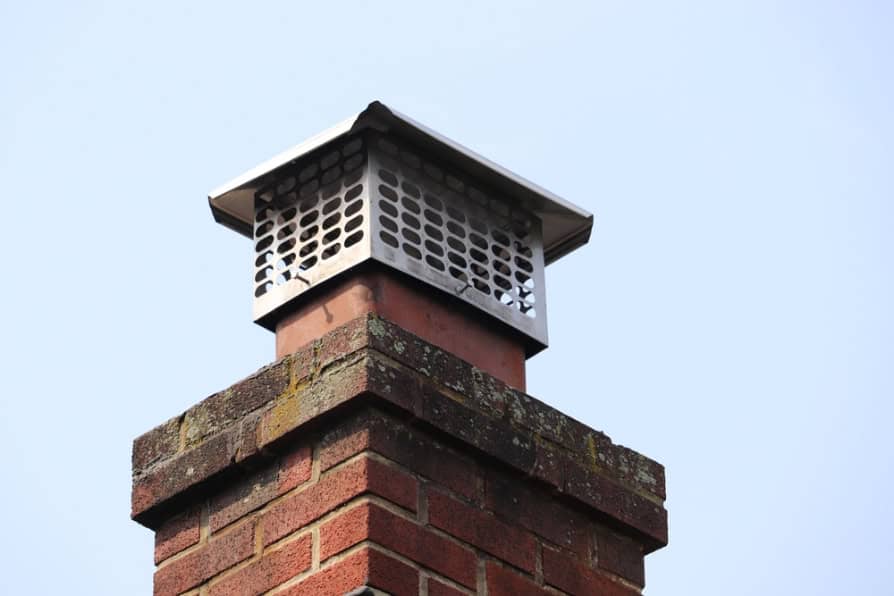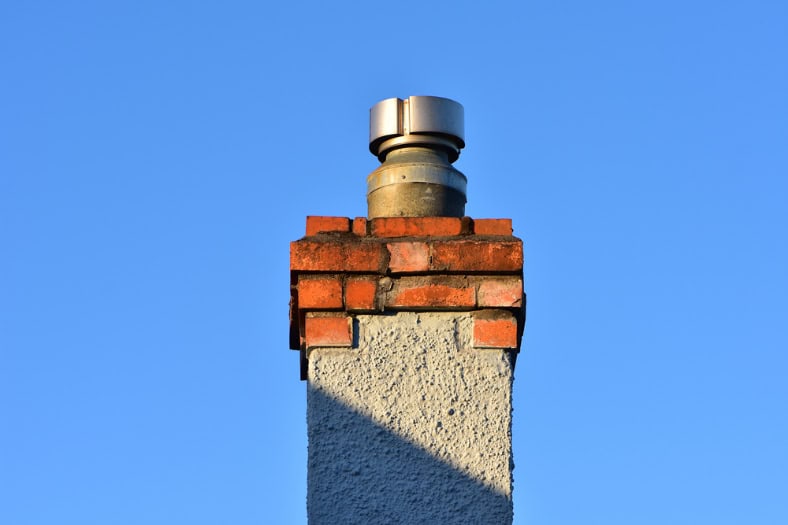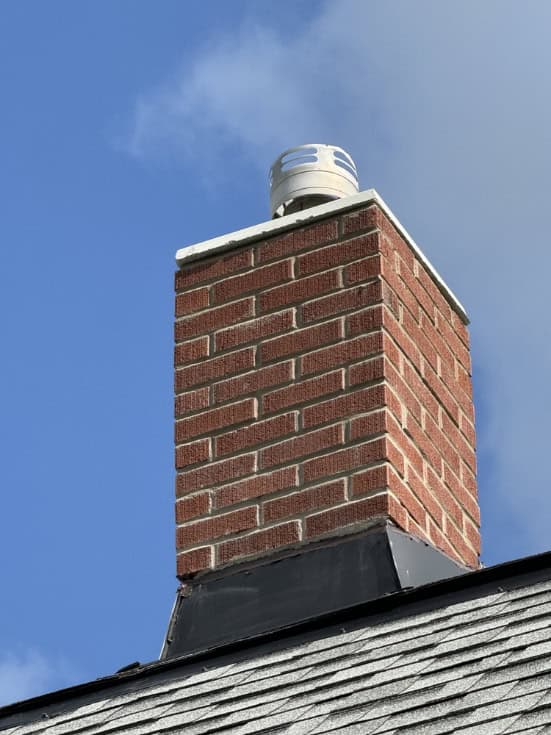
Summary:
Think of your chimney cap as an umbrella for one of your home’s most vulnerable spots. Without it, every rainstorm sends water directly down your chimney, where it soaks into masonry, rusts metal components, and eventually finds its way into your home.
Water damage from uncapped chimneys doesn’t happen overnight, but when it does show up, the repair bills add up fast. You’re looking at damaged flue liners, rusted dampers, stained walls, and sometimes even structural issues. A chimney cap stops this cycle before it starts, making it one of the smartest preventive investments you can make.

Water is your chimney’s biggest enemy, especially here in Providence County where we get our share of storms and snow. When water gets into your chimney system, it doesn’t just sit there—it goes to work breaking down everything it touches.
Masonry absorbs water like a sponge, and when that water freezes and thaws through our New England winters, it creates cracks and deterioration that spread throughout your chimney structure. Your flue liner takes a beating too, whether it’s clay tile that cracks under pressure or metal that rusts from constant moisture exposure.
The damper mechanism gets hit particularly hard. These moving parts aren’t designed to handle constant moisture, and once they start rusting, you lose the ability to properly seal your chimney when it’s not in use. That means you’re losing heated air up the chimney even when your fireplace is cold.
A properly installed chimney cap with a good overhang keeps rain and snow from entering your chimney while still allowing smoke and gases to exit freely. The cap’s design creates a protective barrier that directs water away from the chimney opening, keeping your entire system dry and functional.
You’d be surprised how many animals see your uncapped chimney as prime real estate. Squirrels, raccoons, birds, and bats all find chimneys attractive for nesting, and once they move in, getting them out becomes your problem.
Animals don’t just create noise and mess—they bring serious health and safety risks. Bird nests and animal debris can block your flue, causing dangerous carbon monoxide to back up into your home instead of venting safely outside. Dead animals create odor problems that can make your house unlivable until the issue is resolved.
Then there’s the damage these uninvited guests cause while they’re living in your chimney. Animals tear up flue liners, leave droppings that create health hazards, and sometimes die in spaces where removing them requires major chimney work.
A chimney cap with proper screening keeps animals out while maintaining the airflow your chimney needs to function. The mesh is sized specifically to block animals without restricting the draft that carries smoke and gases up and out of your home. It’s a simple solution that prevents complex problems.
Want live answers?
Connect with a Certified Chimney Inspections expert for fast, friendly support.
Beyond protection, a quality chimney cap actually improves how your fireplace performs. The cap’s design helps create better draft conditions, which means your fires burn more efficiently and you get less smoke in your living space.
Wind can create downdrafts that push smoke back into your home, especially during certain weather conditions. A well-designed chimney cap disrupts these wind patterns and helps maintain the upward flow that keeps smoke moving in the right direction—up and out, not back into your room.

Draft problems are frustrating and can make your fireplace nearly unusable on certain days. You light a fire expecting a cozy evening, but instead you get a room full of smoke because wind conditions are pushing air down your chimney instead of allowing it to flow up and out.
Chimney caps are designed with wind direction in mind. The cap’s shape and positioning help deflect wind in ways that actually enhance the natural draft your chimney creates. Instead of wind working against your chimney’s function, a proper cap makes wind work for you by creating better suction at the top of the flue.
This improved draft means your fires start easier, burn cleaner, and produce less smoke in your living space. You’ll notice the difference on windy days when you used to struggle with fireplace performance. The consistent draft also means better heat output because your fire gets the steady air supply it needs to burn efficiently.
For gas fireplaces and other appliances, proper draft is even more critical because these systems rely on precise venting to operate safely. A chimney cap helps ensure these appliances get the consistent draft conditions they need to function as designed.
When your fireplace isn’t in use, your chimney can act like a giant straw sucking heated air out of your home. Even with the damper closed, some air exchange happens, and if your damper isn’t sealing perfectly, you’re losing expensive heated air all winter long.
A chimney cap works with your damper to create better sealing when your fireplace is not in use. While the cap doesn’t replace a properly functioning damper, it does reduce the air movement that pulls heated air up your chimney. This is especially important if your damper has developed gaps over time or if you have an older fireplace system.
The energy savings add up over a heating season. Every bit of warm air that stays in your house instead of going up the chimney means your heating system doesn’t have to work as hard to maintain comfortable temperatures. In a region like Providence County where heating costs are significant, these efficiency improvements make a real difference in your energy bills.
Some chimney caps also include damper systems that provide additional sealing at the top of the chimney. These top-sealing dampers can be particularly effective for older chimneys where the original throat damper isn’t sealing well anymore.
A chimney cap only works as well as it’s installed, and proper installation requires understanding your specific chimney’s needs. Different chimney types, flue configurations, and local weather conditions all affect what type of cap works best and how it should be mounted.
Professional installation ensures your cap is properly sized, securely attached, and positioned for optimal performance. You get the full protection and performance benefits, plus the peace of mind that comes with knowing the job was done right. When you’re ready to protect your chimney investment, we can help you choose and install the right cap for your Providence County home.